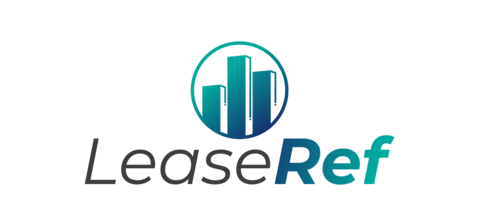Commercial leases could be considered as the infrastructure backbone of many business operations. After all, it provides the space and security companies need to thrive. Among the various types of leases, the perpetual lease stands out as a unique arrangement. A perpetual lease, also known as a permanent or evergreen lease, offers an indefinite leasing period, allowing tenants to occupy a property without a fixed end date.
What is a Perpetual Lease?
A perpetual lease is a commercial lease agreement that continues indefinitely without a fixed end date, allowing the tenant to lease the property until either party terminates the agreement under specified conditions.
Unlike traditional fixed-term leases that expire after a set period, perpetual leases continue until one of the parties decides to terminate the agreement under specific conditions outlined in the lease. This type of lease often includes automatic renewal clauses, ensuring the lease remains active without the need for frequent renegotiations. It’s akin to a well-oiled machine that runs continuously, requiring minimal intervention to keep it going.
The indefinite nature of perpetual leases offers tenants a natural sense of permanence. This stability allows businesses to invest confidently in their leased premises, knowing they won’t face sudden relocations or renegotiations. For landlords, perpetual leases provide a predictable and steady income stream. However, perpetual leases come with their own set of challenges, including reduced flexibility and potential legal complexities. After all, what landlord wants to keep the tenant’s rent the same forever?
Key Characteristics of Perpetual Leases
A perpetual lease has several defining traits that set it apart from traditional commercial leases. These characteristics ensure that both landlords and tenants understand the unique aspects of this type of lease agreement:
- Indefinite Duration
- No fixed end date, allowing tenants to occupy the property indefinitely.
- The lease continues until either party decides to terminate it under agreed-upon conditions.
- Automatic Renewal Clauses
- The lease includes provisions for automatic renewal, eliminating the need for periodic renegotiation.
- Ensures the lease remains active and stable over time.
- Specific Termination Conditions
- Clearly defined conditions under which either party can terminate the lease.
- Often includes a required notice period or specific criteria that must be met to end the lease.
- Rent Adjustment Mechanisms
- Clauses that allow for periodic rent adjustments based on inflation, market conditions, or a predetermined schedule.
- Helps ensure that the rent remains fair and reflective of current market values.
- Maintenance and Repair Responsibilities
- Specifies the responsibilities of both the tenant and landlord regarding property upkeep.
- Ensures the property remains in good condition throughout the lease term.
- Subleasing and Assignment Terms
- Outlines the conditions under which the tenant can sublease or assign the lease to another party.
- Provides flexibility for tenants to adapt to changing business needs.
- Dispute Resolution Clauses
- Mechanisms such as arbitration or mediation to resolve any conflicts that may arise.
- Aims to maintain a smooth landlord-tenant relationship and avoid prolonged legal battles.
These key characteristics define the structure and functioning of a perpetual lease, making it a unique and often beneficial arrangement for both landlords and tenants.
Benefits of Perpetual Leases
Perpetual leases offer numerous benefits, particularly for tenants seeking long-term stability. For businesses, this lease type provides a secure environment, allowing investments in property improvements without the uncertainty of lease expiration. This stability acts like a sturdy foundation, enabling businesses to grow over time.
For landlords, perpetual leases ensure a consistent and predictable income stream, facilitating better financial planning. There aren’t many changes in their rent roll setup, other than some occasional maintenance. Additionally, these leases eliminate the need for frequent renegotiations, saving time and reducing conflicts. This arrangement is ideal for landlords aiming to minimize administrative burdens and maintain long-term relationships with reliable tenants.
Drawbacks of Perpetual Leases
While perpetual leases offer stability, they also come with significant drawbacks. Reduced flexibility is a primary concern; landlords have limited ability to adjust lease terms or rent, potentially missing out on market rate increases. This can be like trying to maneuver a business through an economic rough patch without much control—difficult and constrained. Additionally, as market conditions change, the agreed-upon rent may fall below current market rates, affecting profitability. Finally, terminating a perpetual lease can be legally complex, requiring strict adherence to specified conditions, which can be as challenging to say the least.
Legal Considerations
Entering into a perpetual lease involves careful legal consideration. We’ve talked about getting a lawyer to look over commercial leases before, and this is a perfect example of how that can be helpful. The enforceability and specific requirements of these leases can vary significantly by jurisdiction, necessitating a thorough understanding of local laws. For instance, in California, commercial leases must comply with stringent environmental regulations and disclosure requirements, while in Texas, there are more lenient environmental rules but stricter property tax obligations and landlord disclosure mandates.
It is crucial that the lease agreement is clear and comprehensive, detailing all aspects of the perpetual nature, renewal mechanisms, and termination conditions. Compliance with local and national commercial leasing laws, including zoning regulations and tenant rights, is essential. This legal framework acts like the scaffolding of a building, providing the necessary support and structure to ensure the lease is enforceable and fair to both parties.
Common Clauses in Perpetual Leases
Perpetual leases typically include several important clauses to ensure clarity and fairness. Rent adjustment clauses allow for periodic rent increases based on inflation or market conditions, ensuring the rent remains fair over time. Maintenance and repair clauses specify the responsibilities of both tenant and landlord, ensuring the property is well-maintained. Subleasing and assignment clauses outline the terms under which the tenant can sublease or transfer their lease to another party. Termination notice clauses specify the notice period required for ending the lease, often longer than standard leases due to the perpetual nature. Finally, dispute resolution clauses provide mechanisms such as arbitration or mediation to resolve any conflicts, helping to maintain a smooth landlord-tenant relationship.
Examples of Perpetual Leases in Practice
Perpetual leases are particularly useful in certain scenarios. Historic buildings, for example, often utilize perpetual leases to ensure long-term stability and preservation efforts. Businesses seeking strategic locations, like flagship stores or corporate headquarters, benefit from the permanent presence these leases provide. Institutional tenants, such as universities, hospitals, and government agencies, also favor perpetual leases due to their need for long-term site control. These leases can act like an anchor, providing the stability and certainty needed for significant investments and long-term planning.


![The Role of Estoppel Certificates in CRE [TEMPLATE]](https://www.leaseref.com/wp-content/uploads/2024/11/Three-people-looking-over-estoppel-certificate_500X1000.jpg)
